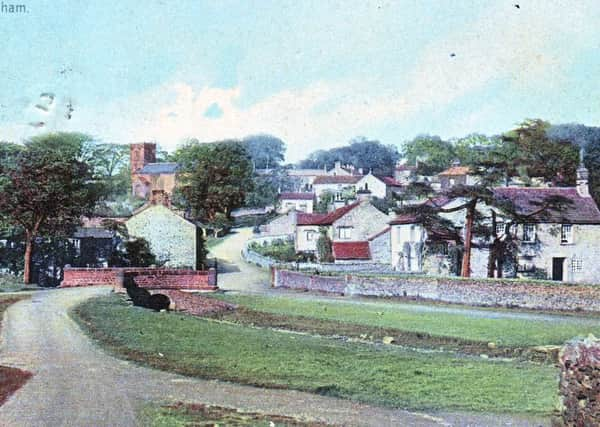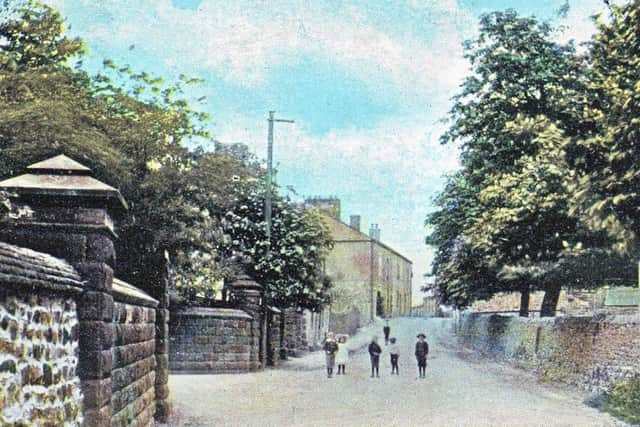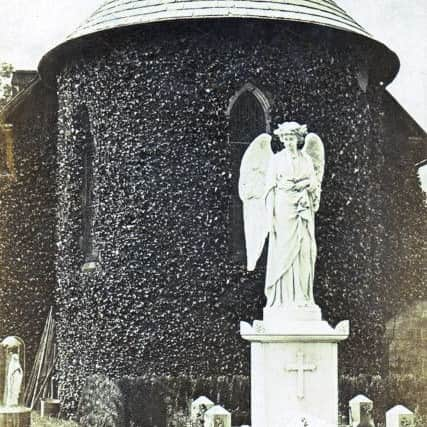Three great day trips out this summer


At this time country walking was a pastime which was very probably at its most popular but the walkers could not rely on cars. A few might have had motor bikes but, if the walkers wanted to see places outside their own locality, they had to make a choice between the local tramway systems and the railways.
In the book, the first advert is for the LNER (London and North Eastern Railway) which indicated it had “Cheap day return tickets, first and third class” for those who wanted to undertake “walking tours in the Manchester district”. The LNER advert also indicated that the firm also published a booklet of walks, with maps and photos, giving details of the “Tours” they had formulated and which could be purchased at their stations and town offices.
Advertisement
Hide AdAdvertisement
Hide AdThe LMS (London Midland and Scottish), another railway company, also sold “ramblers’ tickets though Carter’s, a firm of booking agents with offices in Moss Side and at New Cross in Manchester city centre. I was reminded of my days at Manchester University by another advert in the booklet. This was for the CHA but very well known in the 1920s as the Co-operative Holidays Association which, even in my time at Manchester, had offices on Cromwell Range, Fallowfield. In my early days, at the university, I used to look for the CHA sign as it was there that the bus stopped for Cardinal Allen Hall where I lived when a student.


The book mentions one walk in the Burnley area. It is Walk Number 2, “Colne to Hebden Bridge, by Widdop Moor and Hardcastle Craggs”, a walk which takes one through the whole of Briercliffe and Extwistle. I have completed, and thoroughly enjoyed, most of the recommended walk on several occasions.
Mr Macauley, as you might expect, starts from Colne railway station, noting that the distance to be walked is 13 miles and the fare, from Manchester Victoria station, to Colne, was four shillings and three pence (c21p in modern money, quite a lot in those days). In the second paragraph the author makes the following observation: “There is a wide view of the Calder Valley”, he writes, “with its forests of factory chimneys, to the right, and beyond it the massive slopes of Pendle Hill bound the horizon”.
I know that view very well but was surprised to see the phrase “Calder Valley” in the sentence. The name of the river here is Colne Water, not the Calder, but, in the past, there was much confusion about the names of our local rivers. For example, at Higherford, there is some property known as Calder View but the stream, over which it looks, is Pendle Water, a name which has applied for years.
Advertisement
Hide AdAdvertisement
Hide AdThose of you who have read my book on the (Lancashire) Calder will know I resolve that conundrum on those pages, but reading Mr Macauley’s book, got me thinking about where I would recommend someone go for an interesting walk. In recent years – for a number of reasons, health age etc – I have been unable to enjoy the long walks, like the one outlined above, that I used to I have taken to visiting some of the places Mr Macauley knew so well.


A lot has changed since 1929 but Mr Macauley takes his walkers to Cragg Vale, where the famous Cragg Vale Coiners applied their dangerous trade; to Grant’s Tower and Holcombe Hill; to Hayfield and Alderley Edge. All of these walks pass through interesting villages. I have taken to driving to a village which looks appealing on a map, parking up and investigating the place, so I wondered if you would like to do the same?
I remember my first visit to Tideswell in Derbyshire. The parish church there is known as the “Cathedral of the Peak” and that is what attracted me to the place. Tideswell turned out to be an almost unspoiled village with its own shops, pubs and interesting properties. The church was well worth the visit.
Another place I travelled to, by car, was Howden, just off the M62, near Goole in Yorkshire. The church there, the great Howden Minster, was a revelation and, unlike Tideswell, of Cathedral proportions. The village centre had a number of good shops, cafés and old buildings. I have been back time and again and often feel I could live there. Mind you this could be my grandmother’s Yorkshire ancestry coming to the fore, so don’t blame me, blame her!
Advertisement
Hide AdAdvertisement
Hide AdSo what would be my recommendations for you to visit in the summer ahead of us? What are the attractions once you get to the village? I don’t want you to have to travel too far and you will want somewhere to park when you get there. All these factors I will take into account in the following three villages each of which are in Lancashire. I will come back to this theme in the coming weeks.
My first choice is Dunsop Bridge which has a number of Burnley and Towneley family connections. The village is west of Slaidburn, another of my choices, and is situated on one of my favourite rivers, the Hodder. Dunsop Bridge is part of the Queen’s Lancashire estate to which Her Majesty once said she would retire … if she could! Obviously, we hope she does not do so, but if Dunsop Bridge is good enough for the Queen, it is good enough for me.
The Royal estate includes the Inn at Whitewell, which was once supplied by food from the Offshoots Project in Burnley. The village of Dunsop Bridge itself is worth a visit. It has a splendid village green much visited by the local duck population, very good little tea rooms, a garage (a rare thing in a village these days) and a car park. The Village Hall is open for teas at weekends.
Dunsop Bridge’s Burnley connections derive from the Towneley family whose house at Thorneyholme is still standing though not in their ownership. The family built the splendid Catholic Church in the village and, in the church and its graveyard, there are memorials to members of the family including Richard Towneley, who died before he could succeed to the estate, and Sister Marie des Saints Anges (Mary Elizabeth Towneley) who should be remembered for her contribution to the education of Catholic children.
Advertisement
Hide AdAdvertisement
Hide AdThe second choice I make is Slaidburn. Another village with a good village green and a safe car park, Slaidburn is larger than Dunsop Bridge but it, too, has a Towneley connection in that a former rector of the church there was a Towneley, though I think he was a Towneley of Royle rather than of Towneley.
Slaidburn is also on a very pleasant river, the Croasdale Brook, which joins the Hodder in the village. The Hodder, which is only about 23 miles in length, drains much of the Forest of Bowland and the stretches of the river in this area are particularly beautiful. However, the village itself is of great interest with a very good, and historically interesting pub (the Hark to Bounty); a restaurant on the village green; one of those village stores that bring back memories and a small Heritage Centre. When I have been to Slaidburn recently, the Heritage Centre has not been open but I understand Wednesdays and Fridays are your best days if you want to see the displays they have.
The third, and last of my choices this week, is more local to us. Downham is one of the prettiest villages you will ever see. Built of local stone it has just about everything a visitor would like to see – beautiful views to Pendle, especially from the church (thought to be the best view from a church porch anywhere in England); a great pub, the Assheton Arms; a small heritage display and a car park. The old water mill is still standing, just off the Rimington road, and when “Whistle Down the Wind” was filmed, Downham provided the backcloth as it has done for a number of TV shows.
There some really good news about Downham in that the Greendale Café/Restaurant, which is on Lord Clitheroe’s estate, has recently reopened. Situated on the Roman Road from Ribchester to Elslack, near Skipton, the Greendale serves meals all day but they also sell their own bread. I bought a granary loaf the other day which was pretty good.
Advertisement
Hide AdAdvertisement
Hide AdThese three villages are lovely places to be on a nice summer day. You can get there by car and you can enjoy an afternoon tea in one of the café/restaurants or a drink in one of the pubs. It is possible to walk around the villages or you could extend a walk into the nearby countryside. We are so lucky, in the Burnley area, in that we do not have to travel so far to see some interesting villages and some great countryside.